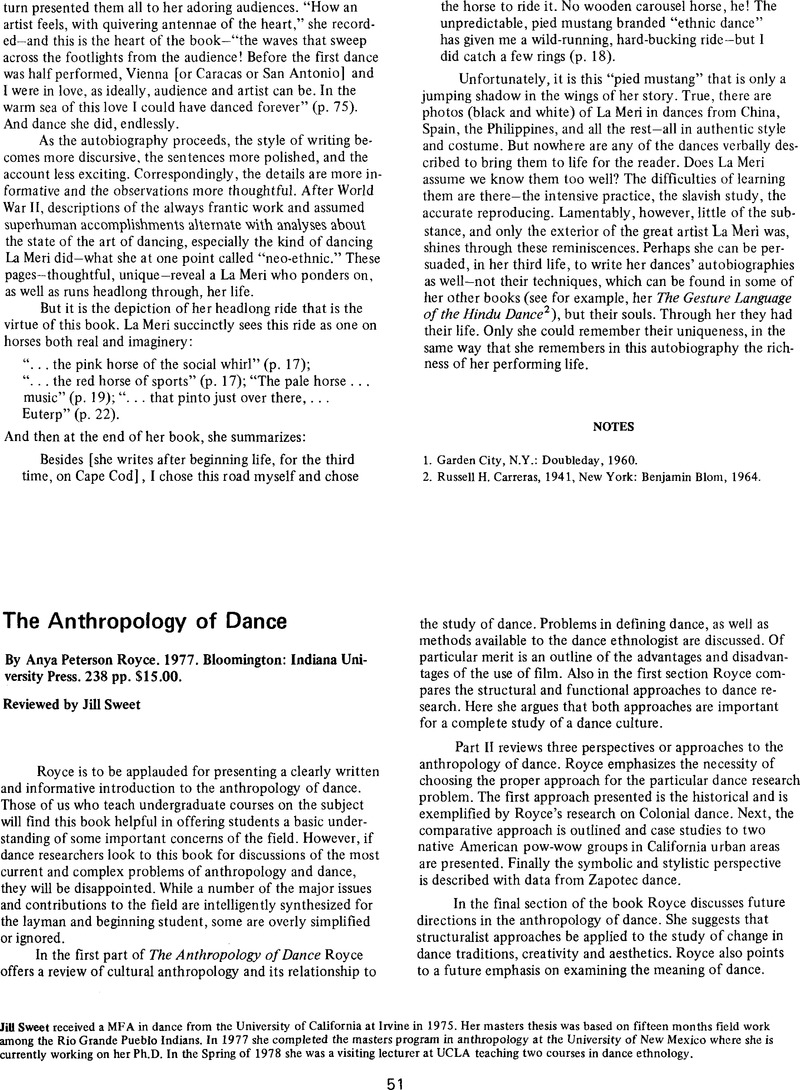Published online by Cambridge University Press: 22 July 2014

1. For a discussion of the Hopi concept of dance as “work” see Kealiinohomoku, Joann, “Hopi and Polynesian Dance” Ethnomusicology XI:3 (September), 1967, p. 348Google Scholar, and Theory and Methods for An Anthropological Study of Dance, Ph.D. dissertation (Indiana University 1976) Ann Arbor: University Microfilms p. 24.
2. See Hanna, Judith Lynne, The Anthropology of Dance Ritual, Ph.D. dissertation (Columbia University 1976)Google Scholar, Ann Arbor: University Microfilms; “Toward Semantic Analysis of Movement Behavior: Concepts and Problems,” Semiotica, in press (CORD Conference Paper, 1976).
3. See Judith Lynne Hanna, ibid.; “Dances of Anáhuac–For God or Man?” Dance Research Journal VII:1, 1975; “To Dance is Human,” in Blacking, John, ed. The Anthropology of the Body (New York Academic Press) 1977, pp. 211–232.Google Scholar
4. See Turner, Victor, Schism and Continuity in An African Society (Manchester: University of Manchester Press) 1957.Google Scholar
5. See Merton, Robert K., Social Theory and Social Structure (Glencoe, Ill: Free Press) 1957, pp. 21–84.Google Scholar